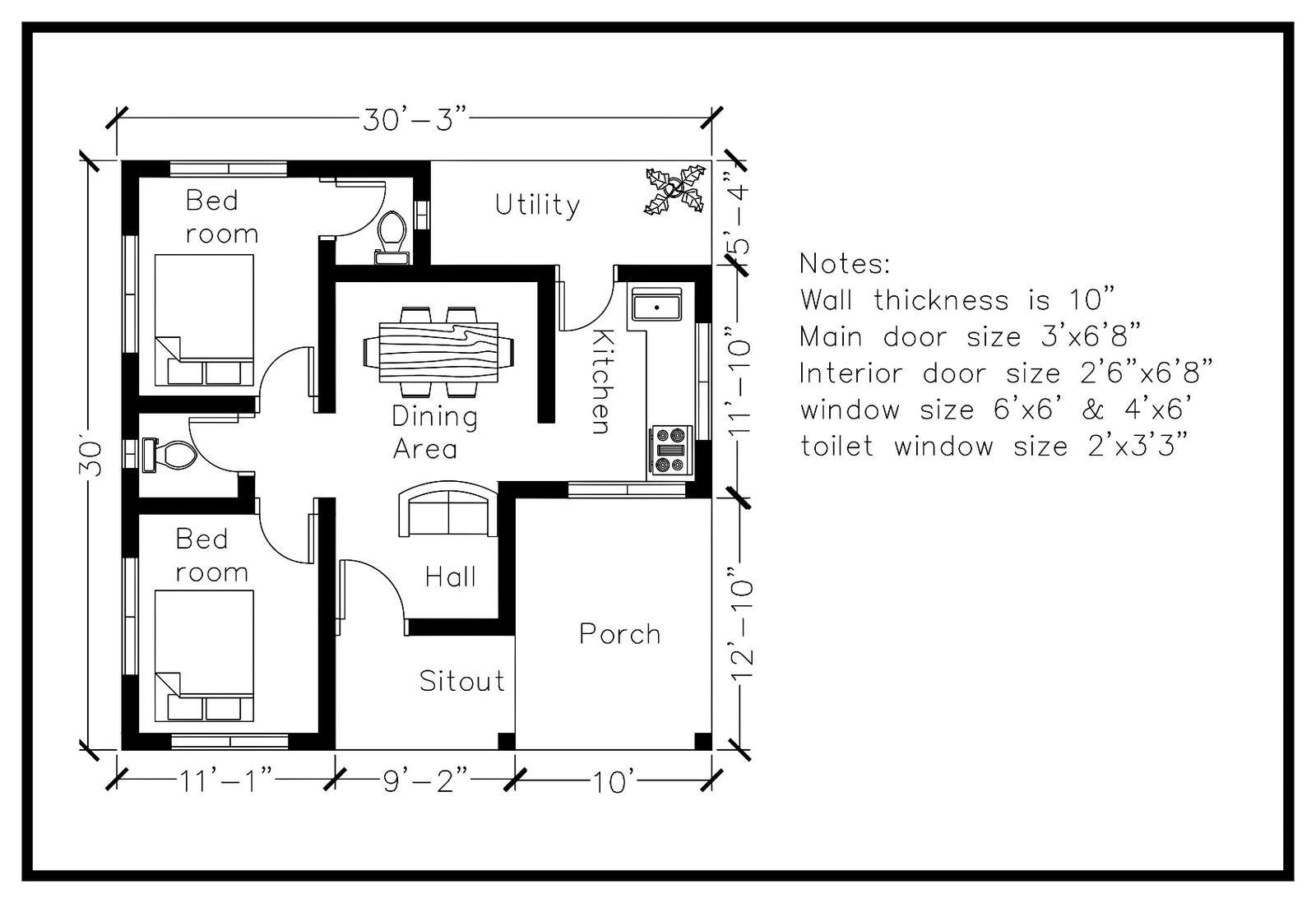Building a 24×24 1-Bedroom House: 24×24 1 Bedroom House Plans

Constructing a 24×24 1-bedroom house is a rewarding project that allows you to create a personalized living space within a manageable footprint. The journey involves careful planning, obtaining necessary permits, and executing construction steps with precision.
Planning and Permits
Planning is the foundation of a successful construction project. It involves defining the scope of the project, budgeting, and obtaining the necessary permits.
- Design and Floor Plan: Create a detailed floor plan that Artikels the layout of the house, including the bedroom, bathroom, kitchen, and living area. Consider the flow of traffic, natural light, and desired amenities.
- Budgeting: Develop a realistic budget that accounts for all expenses, including materials, labor, permits, and unforeseen costs.
- Permits: Contact your local building department to obtain the necessary permits for construction. These permits ensure that your project complies with local building codes and safety regulations.
Foundation
The foundation is the base of your house, providing stability and support.
- Site Preparation: Clear the construction site of any debris, vegetation, and existing structures.
- Foundation Type: Choose a foundation type suitable for your soil conditions and climate. Common options include slab foundations, crawl spaces, and basements.
- Excavation: Excavate the area according to the foundation plan, ensuring proper depth and drainage.
- Concrete Pouring: Pour the concrete foundation according to the design specifications, ensuring proper curing time.
Framing
Framing provides the structural support for your house.
- Framing Materials: Select framing materials, such as lumber, engineered wood products, or steel, based on cost, availability, and structural requirements.
- Wall Framing: Erect the walls according to the floor plan, ensuring proper bracing and insulation.
- Roof Framing: Construct the roof frame, including rafters, trusses, and sheathing, to support the roofing system.
Exterior Cladding, 24×24 1 bedroom house plans
The exterior cladding protects your house from the elements and adds aesthetic appeal.
- Siding Materials: Choose siding materials, such as wood, vinyl, fiber cement, or brick, based on cost, durability, and aesthetics.
- Window and Door Installation: Install windows and doors according to the design, ensuring proper insulation and weatherproofing.
- Roofing: Install the roofing system, including shingles, underlayment, and flashing, to protect your house from rain and snow.
Interior Finishes
Interior finishes transform the structure into a comfortable and inviting living space.
- Drywall Installation: Install drywall on the walls and ceilings, ensuring proper taping and finishing.
- Flooring: Install flooring, such as hardwood, tile, or carpet, in different areas of the house.
- Painting: Paint the walls and ceilings according to your preferences, using appropriate paint types for different surfaces.
- Cabinets and Countertops: Install cabinets and countertops in the kitchen and bathroom, choosing materials that meet your functional and aesthetic needs.
Building Materials: A Comparative Analysis
Choosing the right building materials is crucial for cost-effectiveness, sustainability, and aesthetics.
- Wood: A traditional and readily available material, wood offers excellent insulation and aesthetic appeal. However, it is susceptible to moisture damage and requires regular maintenance.
- Steel: Steel is strong, durable, and resistant to pests and fire. However, it can be expensive and requires skilled labor for installation.
- Concrete: Concrete is a durable and affordable material, offering excellent fire resistance and longevity. However, it can be heavy and requires specialized equipment for handling.
- Sustainable Materials: Consider using sustainable materials like bamboo, recycled plastics, or reclaimed wood to reduce your environmental footprint.
Importance of Qualified Contractors
Hiring qualified contractors is essential for a successful construction project.
- Experience and Expertise: Choose contractors with proven experience and expertise in residential construction.
- Licensing and Insurance: Ensure that your contractors are licensed and insured to protect you from liability.
- Communication and Transparency: Select contractors who communicate effectively, provide clear estimates, and maintain transparency throughout the project.
Building Code Compliance
Following building codes is crucial for safety and structural integrity.
- Understanding Codes: Familiarize yourself with local building codes and regulations.
- Code Inspections: Schedule regular inspections by the building department to ensure that your construction meets code requirements.
- Safety Measures: Implement safety measures on the construction site, including proper scaffolding, personal protective equipment, and emergency procedures.
